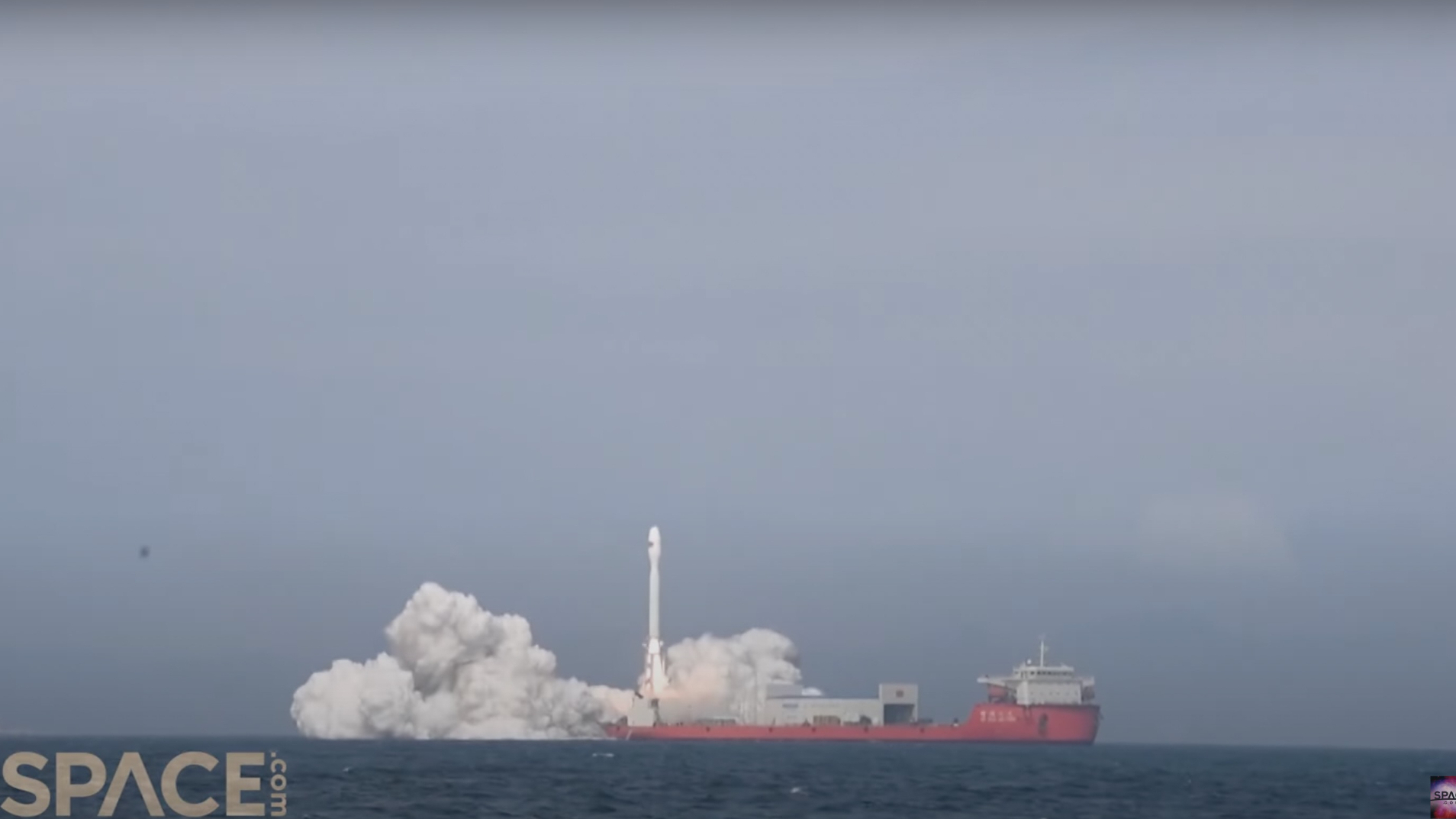Watch China launch Smart Dragon-3 rocket from the sea (video)
China is adding sea launch to its space capabilities.
China has aced its 10th sea launch using a specially converted floating barge and a solid rocket.
The Smart Dragon-3 solid rocket lifted off from a mobile sea platform off the coast of Yangjiang, a city in South China's Guangdong province, at 10:06 p.m. EST on Feb. 2 (0306 GMT and 11:06 a.m. Beijing time on Feb. 3).
Exhaust billowed out from the rocket before it lifted off. Insulation tiles then fell from the payload fairing, which encased its payload of satellites, as the launcher climbed into the sky.
Related: China's record-breaking Gravity-1 rocket aces amazing debut launch from ship at sea (video)

The four-stage, 102-foot-tall (31 meters) Smart Dragon-3 carried nine satellites aloft. These included the NExSat-1 remote sensing satellite for Egypt and Xingshidai-18, an experimental networking satellite that integrates communication, high-resolution remote sensing and artificial intelligence, for the commercial firm ADA Space. Other satellites aboard the flight were developed by Beijing-based Smart Satellite and state-owned giants CASIC and the Chinese Academy of Sciences.
The Smart Dragon-3 (also known as Jielong-3) was developed by the China Academy of Launch Vehicle Technology (CALT), a state-owned rocket manufacturer and the maker of the nation's venerable Long March family of rockets. Smart Dragon-3, however, is operated by a commercial spinoff named China Rocket.
China Rocket is now looking to ramp up launches of the Smart Dragon-3, having aced its third launch.
Get the Space.com Newsletter
Breaking space news, the latest updates on rocket launches, skywatching events and more!
"We continuously enhance the reliability, cost-efficiency and safety of the rocket to prepare for subsequent mass production, minimizing our contractual lead time to the shortest possible duration," Jin Xin, chief commander of the Smart Dragon-3 rocket, told China Central Television (CCTV).
The rocket is capable of sending 3,300 pounds (1,500 kilograms) of payload to a 310-mile-high (500 kilometers) sun synchronous orbit.
The mission was China's 10th sea launch overall and followed the spectacular debut launch of the huge, all-solid Gravity-1 rocket in January.
China's sea launch facilities are based at Haiyang spaceport in the eastern province of Shandong. The Haiyang spaceport is operated by the Taiyuan Satellite Launch Center. China's first sea launch took place in June 2019 using a Long March 11 rocket, and Haiyang is now looking to boost its launch rate.
Join our Space Forums to keep talking space on the latest missions, night sky and more! And if you have a news tip, correction or comment, let us know at: community@space.com.

Andrew is a freelance space journalist with a focus on reporting on China's rapidly growing space sector. He began writing for Space.com in 2019 and writes for SpaceNews, IEEE Spectrum, National Geographic, Sky & Telescope, New Scientist and others. Andrew first caught the space bug when, as a youngster, he saw Voyager images of other worlds in our solar system for the first time. Away from space, Andrew enjoys trail running in the forests of Finland. You can follow him on Twitter @AJ_FI.









